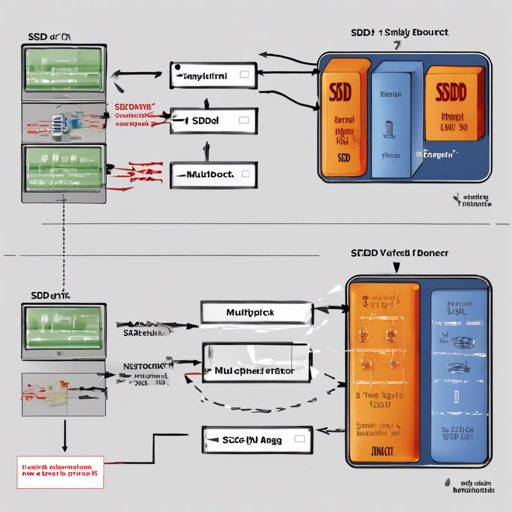Are you eager to dive into the world of object detection? The Single Shot MultiBox Detector (SSD) is an exciting model that you can implement in PyTorch! This guide will take you through the necessary steps from installation to evaluation of your very own SSD model.
Table of Contents
Installation
To get started, you’ll want to install the dependencies:
- Install PyTorch by selecting your environment on the website and running the appropriate command.
- Clone the repository.
- Note: Python 3+ is strongly recommended for operation.
Next, follow these steps to set up the dataset:
- Download the datasets according to the instructions in the Datasets section.
- For real-time visualization during training, you can utilize Visdom by installing it and starting the server.
Datasets
Getting datasets is crucial for training your model. In this section, we provide bash scripts for easy setup:
COCO Dataset
To download the COCO 2014 dataset:
sh datascripts/COCO2014.shPASCAL VOC Dataset
To download the VOC 2007 and VOC 2012 datasets:
sh datascripts/VOC2007.shsh datascripts/VOC2012.shTraining SSD
Now it’s time to train your model:
- Download the fc-reduced VGG-16 weights:
mkdir weights
cd weights
wget https://s3.amazonaws.com/amdegroot-models/vgg16_reducedfc.pthpython train.pyNote: Training on an NVIDIA GPU is strongly recommended for better performance. You can pick up training from a checkpoint by specifying the checkpoint path.
Evaluation
After training your model, you’ll want to see how well it performs. To evaluate it, run:
python eval.pyPerformance
The SSD model shows impressive performance levels. Here’s a summarized performance from the VOC 2007 test:
- mAP (mean Average Precision):
- Original: 77.2%
- Converted Weights: 77.26%
- From Scratch (without data augmentation): 58.12%
- From Scratch (with data augmentation): 77.43%
- FPS (Frames Per Second) on GTX 1060: ~45.45 FPS
Demos
Explore the model further with pre-trained networks and demo notebooks:
- To utilize a pre-trained SSD network, download the models:
- SSD300 trained on VOC0712 (newest PyTorch weights)
- SSD300 trained on VOC0712 (original Caffe weights)
- Run a demo notebook in Jupyter to visualize results:
- Make sure you have Jupyter Notebook installed.
Future Work
The development team has a few items to tackle:
- Support for SSD512 training and testing.
- Support for training on custom datasets.
References
For further reading, check out:
At fxis.ai, we believe that such advancements are crucial for the future of AI, as they enable more comprehensive and effective solutions. Our team is continually exploring new methodologies to push the envelope in artificial intelligence, ensuring that our clients benefit from the latest technological innovations.
Troubleshooting Ideas
If you run into issues during your work with SSD, here are some common troubleshooting tips:
- Ensure that all dependencies, especially PyTorch, are correctly installed.
- Check that your NVIDIA drivers are up to date if you’re using a GPU.
- Remember to balance your dataset; a skewed dataset can affect your model’s ability to learn.
- For real-time loss visualization, make sure that the Visdom server is running correctly.
For more insights, updates, or to collaborate on AI development projects, stay connected with fxis.ai.

